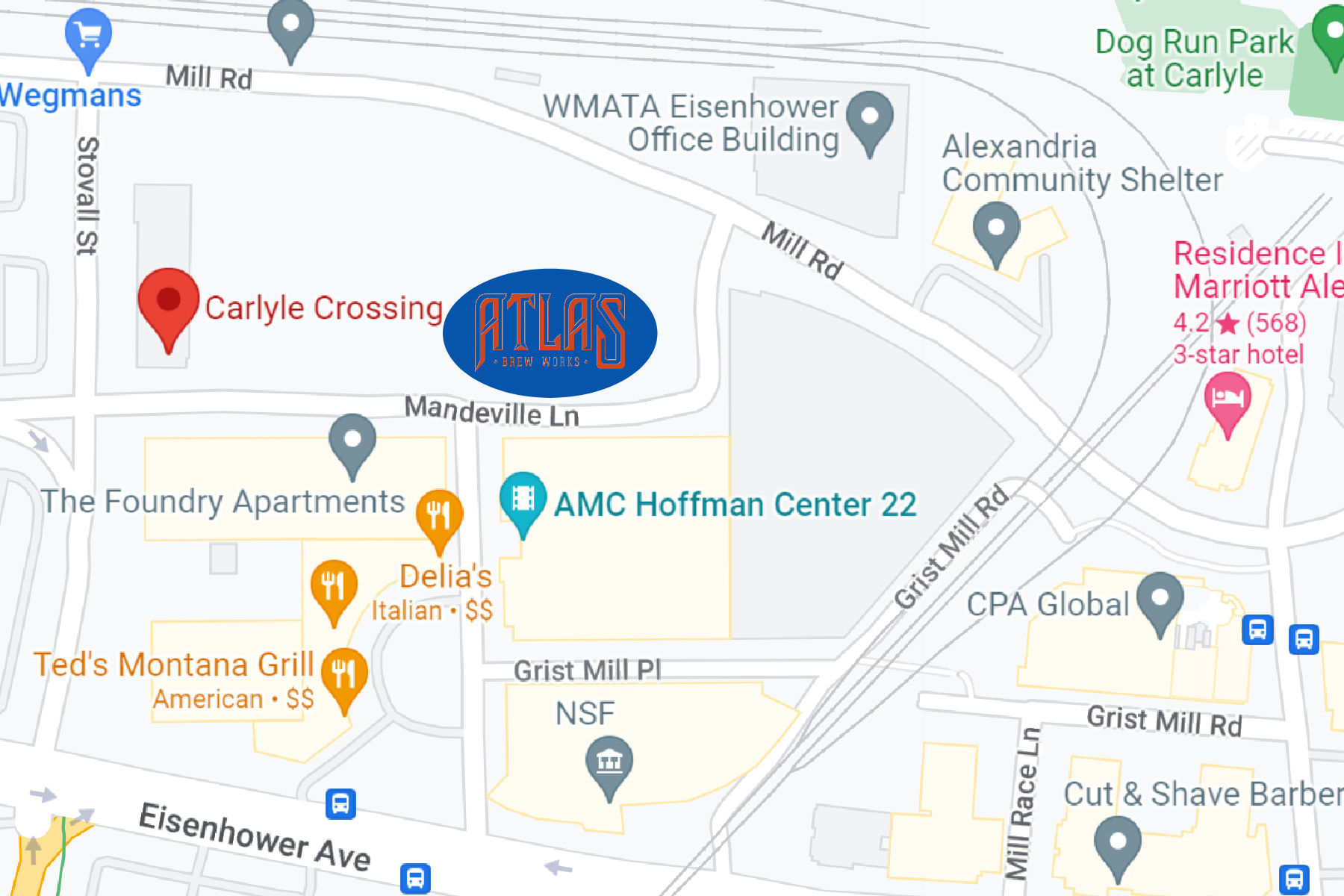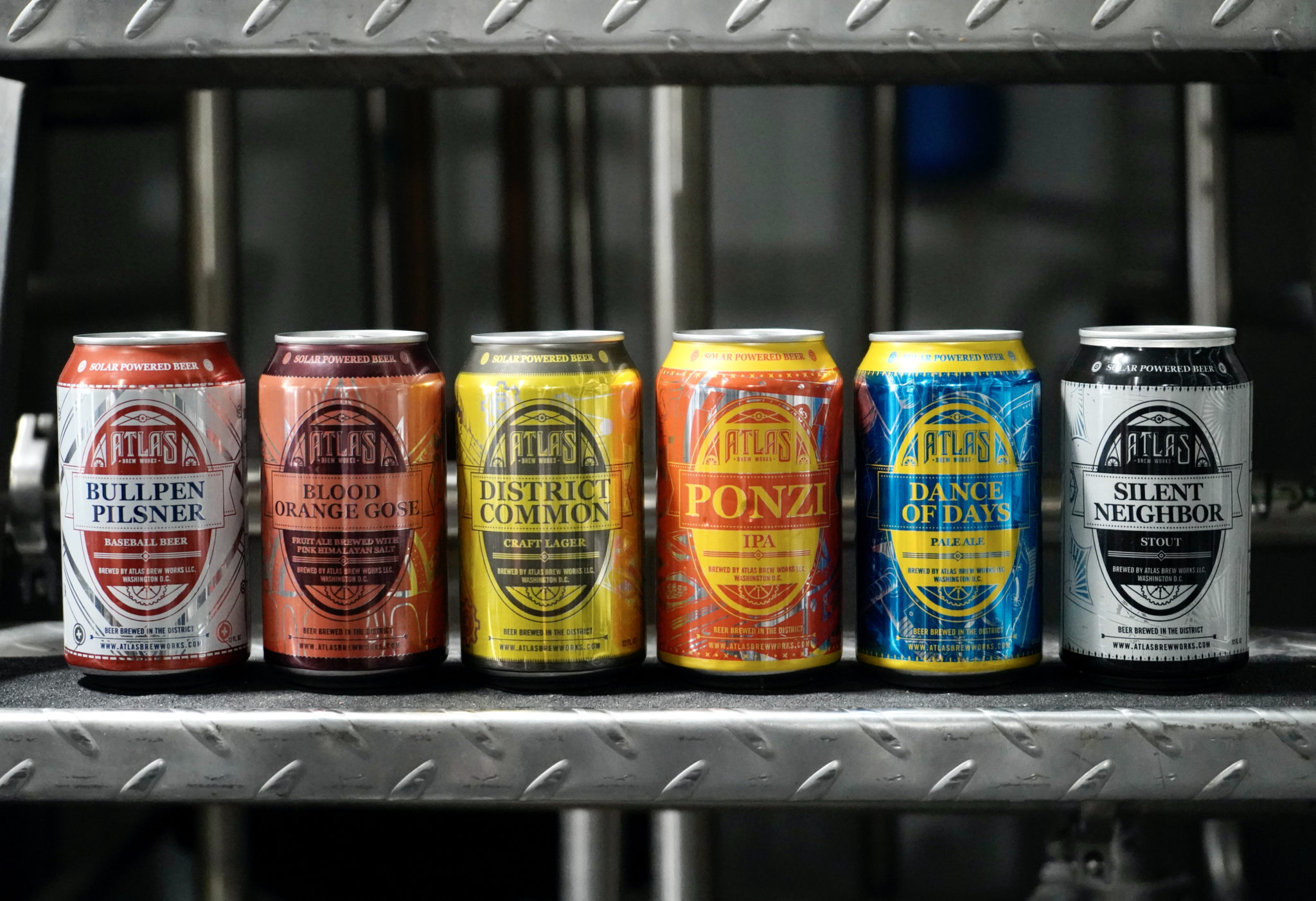Solar-powered Atlas Brew Works Opening its First Virginia Location in Carlyle Crossing
Atlas Brew Works to Open Third Brewery and Tap Room in Late Fall
Alexandria, VA. Solar-powered Atlas Brew Works is opening its first Virginia location. The third location of Atlas Brew Works will be located in the Carlyle Crossing mixed-use development in Alexandria with a late-2023 opening. The brewery and tap room will also offer food from award-winning Andy’s Pizza.

“Our Team is super excited to bring an Atlas brewpub to Alexandria,” said Atlas Brew Works Founder and CEO Justin Cox. “While our beer has been available in Virginia for a while, having a brick-and-mortar brewery in the state will allow us to continue to grow our relationship with our customers while brewing new and exciting recipes.”
The 6,000 square-foot space will include the brewery with a production capacity of 2,000 barrels, led by Director of Brewing Operations Daniel Vilarrubi, an adjoining tap room with 16 draft lines and kitchen facility, and around 1,500 square feet of outdoor patio space. Keeping with its reputation and mission of sustainable stewardship, Atlas Brew Works plans to pursue sustainable energy sources at its third location.
Regulars will recognize the brewery’s six core beers including Bullpen Pilsner, which recently won a bronze medal at the 2022 Great American Beer Festival, in addition to special limited releases brewed in and only available at its Alexandria location.

Atlas Brew Works has locations in DC’s Ivy City and Capitol Riverfront neighborhoods where they create balanced, great-tasting ales and lagers in a solar-powered facility.
ALSO IN LOCAL FOOD NEWS: New Pop-Up Cocktail Hotspot is WOWING Customers with Plant-Themed Decor




